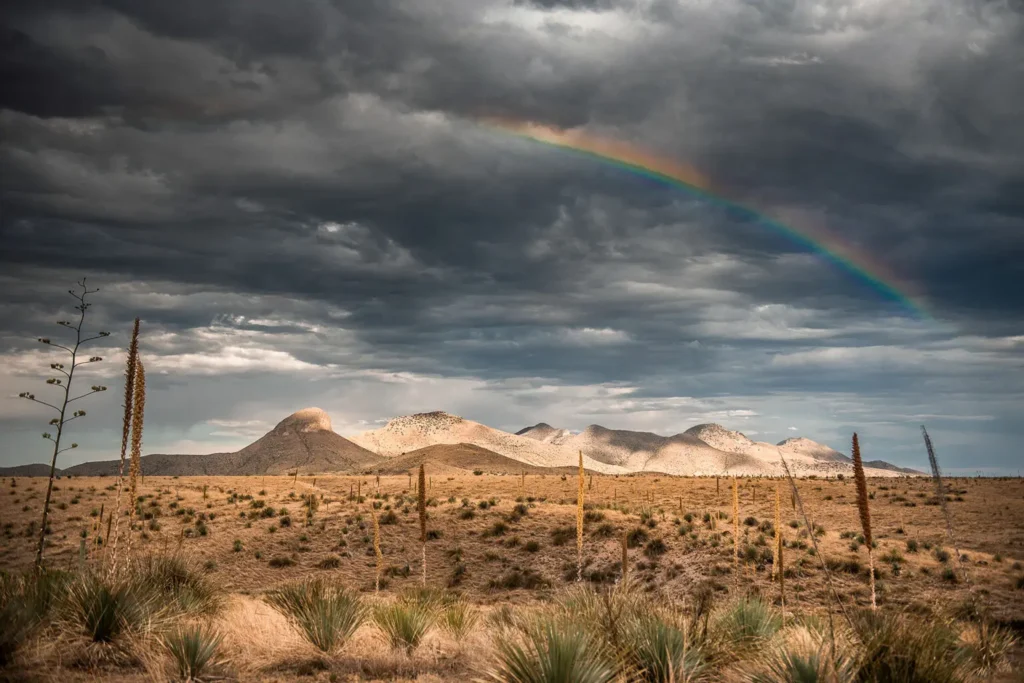Reprinted by permission of Wine Enthusiast – Author, Naomi Tomky

Photo by Kayla Lewis Simpson
The Arizona sun beats down on Sonoita, its powerful rays crossing the short distance to the small collection of vineyards about 45 minutes from Tucson. Arizona’s first and largest AVA hugs its southern border in high-altitude grasslands, surrounded by stunning natural beauty and four soaring mountain ranges. Los Milics Vineyards founder and winemaker Pavle Milić describes growing grapes in the sandy loam, limestone and caliche “like planting on the moon.” Despite—and sometimes because of—the intense sunshine, wild winds and summer monsoons, Sonoita produces wine as exciting as its weather: dense, minerally, beguilingly complex.
The region brims with optimism that these conditions make competitive quality wines and breed innovation less necessary in more conventional growing climates. That freedom draws a community of Arizona’s most intriguing winemakers to experiment with their dream projects in a dreamy location.
The copper soil and shrub-covered peaks surrounding Sonoita give it surreal panoramas under seemingly endless skies, an apt metaphor for the opportunity offered. “We’re able to do something here and be on the ground floor, versus going somewhere else, where it’s already been done,” says Rune Wines owner and winemaker James Callahan.
The area’s more than 280 days of annual sunshine power Rune, one of the country’s only off-grid wineries. But, ironically, it’s the desert precipitation that drives decision-making for local winemakers: the heavy rains and occasional hailstorms that accompany the region’s 40-degree diurnal shifts. For Callahan, it just adds to why he calls Sonoita a “high-altitude gem.” The ancient sea floor left behind the rocky, high-pH soil, which forces the grapes to struggle more and results in added complexity. “It’s gonna have good color. It’s gonna have balance,” says Callahan of Sonoita’s wine. “There is a sense of dustiness, an earthiness, minerality.”
Mediterranean wines are oft described as having garrigue, aromas reminiscent of the low-lying herbaceous scrub and brush that grow in the region. Sonoita winemakers use the term to refer to a similar element in their own unique terroir, calling it “Sonoran garrigue.”
To adapt to the unusual growing conditions, Milić branches out to a wide variety of grapes, with more than a dozen on his 20-acre vineyard, including Petit Verdot, Vermentino and Montepulciano. He calls Petit Manseng his Volvo grape for its sturdiness and resistance to the bunch rot often caused by the region’s monsoons. At between 4,500 and 5,500 feet above sea level, prone to winds and late spring frosts, yield in Sonoita is low, about 1.5 to 2 tons of grapes per acre—if you’re lucky. “You can be standing here and see five different weather systems,” says Milić. But any challenges the broad skies and turbulent weather create are overshadowed by its astonishing beauty. “When I started making trips down here 15 years ago, I would get off the I-10 and onto the 83 and begin to feel a visceral dropping of the shoulders,” he says. “You crest at 6,000 feet elevation and this whole valley opens. It’s like there’s some quiet symphony in your head and you’re like, ‘Oh my God, I can breathe.’”
That landscape, combined with the winemakers it draws, creates a region ideal for the curious, open-minded drinker. The resulting wines are rustic, angular and often mismatched with the typical features of specific varieties or styles. “They’re not supposed to taste like wines from California,” says Milić. “It is a little bit harder in Sonoita, but at the end of the day, the wines we produce here tend to be more interesting.”
Quick Facts
Date AVA Established: October 26, 1984
Total Size: 319 square miles
Planted Acreage: 229
Most Planted Grapes: Syrah, Malvasia, Roussanne, Viognier
Climate: High desert grassland
Number of Wineries: 22
